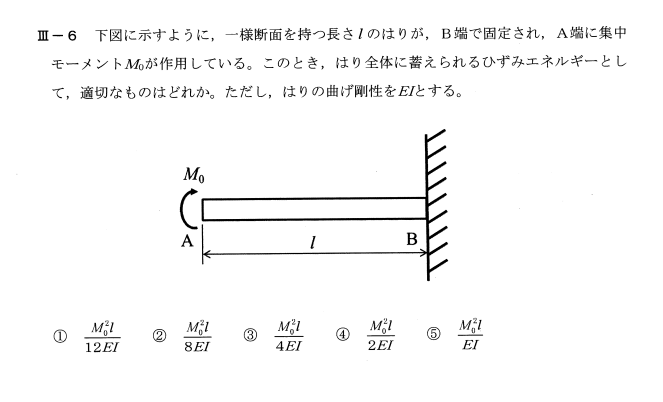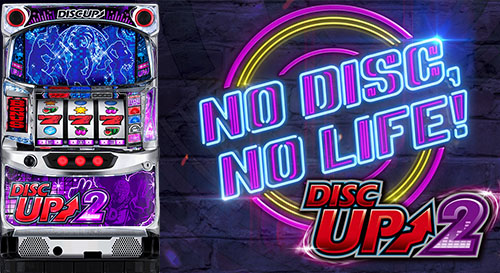私はビットコインに賭けるような形で、上場しているビットコイン関連企業のオプションやショートを保有しています。暗号の言説は、強気派とブースター派に支配されがちだが、それはそういう人が現れるからだ。
これは、強調しておきますが、投資のアドバイスではありません。このポジションは、私のポートフォリオのほんの一部であり、趣味のプロジェクトのようなものです。市場は不合理なままである可能性があり、そのすべてがそうである。それでも、書くのは楽しいので、ここに紹介する。
鉱業経済学
私の賭けは主に、ビットコインを「ホドル」する企業ではなく、ビットコインを採掘する企業に対する賭けとして表現されています。元々、これは偶然の産物でした。マイニング企業は資本集約的で、公開市場だけが提供できるような資本を調達するプレッシャーが最も大きいため、私が探索したところ、彼らが発見されたのです。マイニング企業は資本集約的であり、公開市場でしか提供できない資金調達のプレッシャーが最も大きいため、私が探したところ、彼らが見つかりました。
しかし、採掘産業の経済学に踏み込むと、これらの企業の多くは、ビットコインの将来シナリオに関係なく、割高に感じられることに気づきました。まず、マイニング企業特有のベアケースを取り上げ、その後、より一般的な側面に戻ることにする。
マイニングの仕組み
採掘業者を分析するためには、採掘の仕組みのモデルを持つことが役立ちます。基本的なスケッチは、すべての採掘者が無限のパズルのシリーズを提示されるというものです。各パズルを最初に解いた鉱夫は、賞品を獲得する。
事前に決められた量の新しく鋳造されたビットコイン
いくらかの取引手数料
この2つの相対的な割合は時代とともに変化してきたが、常に新しく鋳造されたビットコインが報酬の大部分を占めてきた。現在は約98%を占め、残りの2%を取引手数料が占めている。
マイナーは計算能力(別名ハッシュレート)が高いほど、パズルを最初に解いて賞金を受け取る確率が高くなる。儲かっている採掘者は、ハッシュレートの拡大(ひいては利益の拡大)に邁進する。ビットコインは設計上、常に固定レートで採掘されるため、この追加能力は「パイを拡大する」ことにはならない。ビットコインは設計上、常に固定レートで採掘されるからです。その代わり、採掘能力の増強は、他の採掘者の取り分を希釈して、その採掘者のパイを増やすだけのゼロサム行為となります。
採掘競争によってパイを拡大することは不可能であるだけでなく、パイそのものが、半減と呼ばれるプロセスによって時間とともに縮小していきます。
これらの事実は、採掘業者にとって非常に厳しい環境であることを物語っています。市場シェアを拡大することはおろか、経営を維持するために大規模な設備投資が必要です。採掘業者は、減少するパイの同じスライスを獲るた めに膨大な資本を費やすが、採掘の仕組みに対する投資 家の混乱を利用して、それを成長への投資と見なしてい る。ビットコインの価格が上昇すれば、少なくとも次の半減期まではパイが大きくなりますが、現在の評価額では、ほとんどのマイニング企業は、ビットコインを買うだけと比較して、ビットコインの価格が上昇することに賭ける効率的な方法とは言えません。同じ理由で、彼らはその賭けの反対側を表現する魅力的な方法なのです。
Competitive Position
Another strike against mining companies is that they have no real competitive moat. Bitcoin is fungible, so nobody cares (or even knows) who mined one. On the other hand, miners are at the mercy of upstream suppliers who do enjoy a good competitive position: only a handful of companies make hardware that is able to mine efficiently enough to profit. The supply of this specialized hardware is a bottleneck on growth of big mining operations, so its manufacturers have substantial pricing power. Publicly traded miners are also on the wrong side of an information asymmetry, because their suppliers can look at published data and figure out pretty easily just how much marginal value each mining rig generates for them.
So far everything I’ve talked about has been specific to mining companies. Let’s return to bitcoin itself.
Network Sustainability
Bitcoin is touted as both a secure and non-inflationary asset, which brushes aside the fact that those things have never simultaneously been true. As we’ve seen, Bitcoin’s mining network, and therefore its security, is heavily subsidized by the issuance of new bitcoin, i.e. inflation.1 It’s true that bitcoin will eventually be non-inflationary (beginning in 2140), but whether it will remain secure in that state is an open question.
This isn’t a problem we can punt to posterity, either, because the nature of halving is that the reward drops exponentially. By the sixth halving in 2032, the subsidy will be an eighth of what it is today. Unless the price of bitcoin goes up significantly in that period, or transaction fees increase enough to compensate, the cost of an attack on the network will fall accordingly.
To date, the network hash rate of bitcoin has continued to rise in spite of halvings, due to increases in the price of bitcoin offsetting decreases in the bitcoin-denominated mining reward, and improvements in mining hardware. But those hardware improvements become available to honest and dishonest miners alike, and an asset that needs to double in value every four years to sustain a level of security is just a slow-moving wheat and chessboard problem.
The security of bitcoin matters for two reasons. First, because bitcoin’s legitimacy as the crypto store of value stems from it. Out of a sea of coins, the two things that bitcoin indisputably ranks first in are its security and age. In combination, these make bitcoin a natural Schelling point for stored value. If halvings cause bitcoin’s security to fall behind another coin, its claim to the store of value throne becomes a more fragile one of age and inertia alone.
The second reason is the tail risk of an actual attack. I consider this a remote possibility over the timeframe of a decade, but with every halving it gets more imaginable. The more financialized bitcoin becomes, the more people who could benefit from a predictable and sharp price move, and an attack on the chain (and ensuing panic) would be one way for an unscrupulous investor to create one.
競争力のあるポジション
マイニング企業のもう一つの弱点は、競争力のある堀がないことである。ビットコインは腐りやすいので、誰が採掘したかなんて誰も気にしない(知らない)。一方、採掘業者は、競争力のある上流サプライヤーに翻弄されています。採掘を効率的に行い、利益を上げることができるハードウェアを製造している企業はほんの一握りです。この特殊なハードウェアの供給は、大規模マイニングの成長のボトルネックとなっているため、メーカーは大きな価格決定力を持っている。なぜなら、サプライヤーは公表されたデータを見れば、各マイニングリグが彼らにとってどれだけの限界的な価値を生み出すか、簡単に知ることができるからです。
ここまでの話はすべて、マイニング企業に特化したものでした。ここで、ビットコイン自体に話を戻しましょう。
ネットワークの持続可能性
ビットコインは安全でインフレにならない資産として宣伝されていますが、これらのことが同時に真実であったことはないという事実は棚上げされます。これまで見てきたように、ビットコインのマイニングネットワーク、したがってそのセキュリティは、新しいビットコインの発行、すなわちインフレによって大きく補助されている1。
半減期の性質上、指数関数的に報酬が減少するため、この問題も後世に回せる問題ではありません。2032年の6回目の半減期には、補助金は現在の8分の1になる。その間にビットコインの価格が大幅に上昇するか、取引手数料がそれを補うほど上昇しない限り、ネットワークへの攻撃コストはそれに応じて低下することになる。
これまで、ビットコインのネットワークハッシュレートは、ビットコイン価格の上昇がビットコイン建ての採掘報酬の減少を相殺したことと、採掘用ハードウェアの改良により、半減期にもかかわらず上昇を続けている。しかし、こうしたハードウェアの改良は、正直なマイナーも不正なマイナーも同様に利用できるようになり、安全性のレベルを維持するために4年ごとに価値が2倍になる必要がある資産は、動きの遅い小麦とチェス盤の問題に過ぎない。
ビットコインのセキュリティが重要なのは、2つの理由がある。1つ目は、暗号化された価値貯蔵手段としてのビットコインの正当性が、それに由来しているからです。数あるコインの中で、ビットコインが紛れもなく1位であるのは、その安全性と古さである。この2つが揃うことで、ビットコインは価値貯蔵のための自然なシェリングポイントとなるのです。もし、半減期によってビットコインのセキュリティが他のコインに遅れをとれば、価値の保存の王座への主張は、年齢と慣性だけのより脆弱なものになる。
第二の理由は、実際の攻撃というテールリスクである。私は、10年という時間枠の中ではこの可能性は低いと考えているが、半減するごとにその可能性は高まっている。ビットコインが金融化すればするほど、予測可能な急激な値動きで利益を得る人が増え、チェーンへの攻撃(とそれに伴うパニック)は、不謹慎な投資家がそれを引き起こす一つの方法となるだろう。
Environmental Cost
The bitcoin mining market is in equilibrium when miners can no longer add compute capacity to the network and expect to profit. I’ve described above how this creates a poor competitive environment for the miners, but all that computation also has a massive environmental cost.
A tempting retort here is “but {cruise ships, private jets, SUVs, etc.} are also bad for the environment”, which of course is true, and is why those things are (rightfully) also subject to frequent scrutiny over their environmental impact. But there are three aspects of bitcoin that make it unique as an environmental threat:
It resists efficiency improvements by design. Hardware companies continue to produce equipment that can mine more per kilowatt. The lower cost of operation (energy being a large cost component) means that miners can run more of these machines profitably. The bitcoin network responds by raising the amount of work miners need to do (the difficulty rate), effectively absorbing the efficiency improvement. This is an extreme case of the Jevons paradox, without the upside: if more fuel-efficient planes mean that there are more flights, at least more people get to fly. By contrast, the rate of bitcoin mining is fixed; efficiency improvements are consumed by the network.
In equilibrium, the energy use is proportional to the price of bitcoin between halvings. Because the bulk of the reward is a fixed amount of bitcoin, a rise in the price of bitcoin increases the amount of energy that miners can profitably put towards it. People rooting for bitcoin to reach $100k are implicitly rooting for significantly more energy to be spent mining bitcoin than already is.
It’s all wealth redistribution, not value creation. As much as cruise ships are not my scene, I acknowledge that they use energy in service of directly creating value for people who enjoy them. Bitcoin has value in the sense that you could trade it to someone for (say) a cruise, because they believe they will be able to trade it to someone for something of value later on, and so on. But the act of minting a bitcoin doesn’t create another spot on a cruise ship, it just adds more claims to the value of one to a ledger.
There is no shortage of rationalizations for the environmental impact. The industry has more or less gaslit itself into believing that bitcoin is not just not an environmental problem, but is a solution (e.g.). I’m not going to rehash the argument here, but suffice it to say, I think it will age about as well as when cigarette companies had doctors say smoking was good for you.
This essay is about my bear case, though, not my moral stance. We can put aside entirely the question of whether bitcoin is actually bad for the environment, because the perception alone that it is bad for the environment is enough to cause it problems. We saw this in action when Tesla stopped accepting it as payment over environmental concerns, and the price immediately dropped. This no doubt gave pause to any other CEOs who considered following Tesla in putting some of their treasury in bitcoin. Environmental concerns are also a cloud hanging over lawmakers and regulators as they write laws and policy that impact bitcoin.
These concerns are particularly salient at a time when proof-of-work, the consensus algorithm at the root of bitcoin’s environmental problems, is falling out of favor relative to proof-of-stake. When ethereum completes its transition to proof-of-stake, bitcoin and dogecoin will be the only remaining proof-of-work coins in the top ten by market cap, down from six at the beginning of 2017. We could debate the merits of alternate consensus approaches, but it’s becoming harder to make the case that the environmental cost of proof-of-work is necessary when competing cryptocurrencies are increasingly able to avoid it.
環境コスト
ビットコインの採掘市場は、採掘者がネットワークに計算能力を追加して利益を得ることができなくなった時点で均衡が保たれます。このことが採掘業者にとっていかに劣悪な競争環境を生み出すかは前述したとおりですが、すべての計算には膨大な環境コストもかかっています。
もちろんそれは真実であり、そのためこれらの機器は(当然ながら)環境への影響について頻繁に精査される対象にもなっています。しかし、ビットコインには、環境に対する脅威としてユニークな3つの側面がある。
ビットコインは、設計上、効率化に抵抗する。ハードウェアメーカーは、1キロワットあたりより多く採掘できる装置を作り続けている。エネルギーが大きなコスト要因である運用コストが低ければ低いほど、採掘者はより多くのマシンを収益的に運用することができる。ビットコインネットワークは、採掘者が行う必要のある作業量(難易度)を上げることで対応し、効率向上を効果的に吸収している。これはジェボンズのパラドックスの極端な例であり、その逆はない。燃料効率のよい飛行機が増えれば飛行機の便数が増えるが、少なくとも多くの人が飛行機に乗れるようになる。対照的に、ビットコインの採掘率は固定されており、効率改善はネットワークによって消費される。
平衡状態において、エネルギー使用量は半減期間のビットコイン価格に比例します。報酬の大部分は一定量のビットコインなので、ビットコインの価格が上昇すれば、採掘者が利益を得るために投入できるエネルギー量も増加する。ビットコインが10万ドルになることを支持する人々は、暗黙のうちに、ビットコインの採掘に費やすエネルギーが今よりかなり多くなることを支持しているのです。
これは富の再分配であり、価値の創造ではありません。クルーズ船は私の趣味ではありませんが、クルーズ船を楽しむ人々のために直接価値を創造するためにエネルギーを使っていることは認めます。ビットコインは、(例えば)クルーズと交換できるという意味で価値があります。なぜなら、その人は、後で価値のあるものと交換できると信じているからです。しかし、ビットコインを鋳造する行為は、クルーズ船の別のスポットを作るわけではなく、台帳に1つの価値に対する主張を追加するだけである。
環境への影響に対する合理的な説明には事欠かない。業界は多かれ少なかれ、ビットコインは環境問題ではないどころか、解決策であるとガス抜きしている(例)。ここで議論を蒸し返すつもりはないが、タバコ会社が医者にタバコは体に良いと言わせたときと同じぐらい、時代遅れなものになると思う、とだけ言っておけば十分だろう。
しかし、このエッセイは、私のベアケースについてであって、私の道徳的スタンスについてではない。ビットコインが実際に環境に悪いかどうかという問題は、完全に脇に置いておくことができます。なぜなら、環境に悪いという認識だけで、十分に問題を引き起こすことができるからです。テスラが環境への懸念からビットコインの支払いを中止し、すぐに価格が下落したとき、私たちはそれを目の当たりにしました。これによって、テスラに続いて自社の財務の一部をビットコインで運用しようと考えていた他のCEOは、間違いなく躊躇したことでしょう。環境問題への懸念は、ビットコインに影響を与える法律や政策を策定する法律家や規制当局の上にも漂っています。
ビットコインの環境問題の根幹をなすコンセンサスアルゴリズムであるプルーフ・オブ・ワークが、プルーフ・オブ・ステークに比べ人気が低下している現在、こうした懸念は特に顕著です。イーサリアムがプルーフ・オブ・ステークへの移行を完了すると、時価総額トップ10に残るプルーフ・オブ・ワークのコインはビットコインとドージコインのみとなり、2017年初頭の6つから減少します。別のコンセンサスアプローチのメリットを議論することもできますが、競合する暗号通貨がそれを回避できるようになってきている今、プルーフ・オブ・ワークの環境コストが必要であると主張するのは難しくなってきています。
Legacy Technology
I’m personally skeptical of NFTs and DeFi, but I can’t ignore that a bunch of capital is flowing into cryptoworld as a result of them. Bitcoin is left almost entirely out of the fun, due to its low throughput and less sophisticated smart contract functionality, both of which are perennially tied to decisions that are more or less frozen in 2009.
I often hear that this is no matter to bitcoin, it is a store of value; it does not need to do other tricks. But if another coin grows a bigger network on the back of providing some utility (or perceived utility), it stands to reason that that coin could also become a better store of value, even if by accident, like cigarettes in a P.O.W. camp. To the extent that demand for a coin’s utility is uncorrelated with speculative interest, that utility has a stabilizing effect — something people appreciate in a store of value, even if they have no desire to consume the utility value themselves. It’s often argued that bitcoin’s value comes from network effects, but by the same token, it’s vulnerable to another network growing larger. Packy McCormick has written a detailed argument on one path that this could take, which is a fun read.
The Wildcard: Tether
If you’re not familiar with Tether, the broad strokes are: Tether is a token issued by a company of the same name, its value is pegged to (and ostensibly backed by) $1 USD, there are 69 billion of them, and nobody but Tether (the company) knows where the corresponding $69 billion USD is.
Tether says it has the $69 billion, but they have been cagey about where it might be, changing their answer whenever evidence mounts that their last answer wasn’t true.
The reason this matters to bitcoin is that, to the extent that the money was piled into bitcoin, it presents a systemic risk to bitcoin itself. This would be true if that amount of borrowed capital were concentrated in any asset (remember Archegos?), but there’s long been speculation that a large amount of it is in bitcoin because Tether (the company) is connected to a bitcoin exchange. More recently, in an article describing Tether as “practically quilted out of red flags”, Bloomberg reported that these assets include “billions of dollars [of loans] to other crypto companies, with bitcoin as collateral.”
If I could short Tether directly for USD, I’d be tempted. It’s only possible to short Tether on crypto exchanges, though, and nobody knows how deeply a Tether collapse could bring down other parts of the crypto ecosystem. Given that Tether may well be sitting on a large pool of bitcoin that it would need to liquidate quickly in the event of a run, I see betting against bitcoin as an indirect way to bet on a run on Tether.2
Cringe
I’ll end off with what I fully admit is the most subjective argument of the bunch: bitcoin culture has become cringe. For most investments this wouldn’t be a factor. Value investors can buy boring equities and laugh at people who call them “unfashionable” all the way to the bank every dividend cycle. But bitcoin has no dividend, its value entirely depends on being able to sell it at a later date. However you dress it up in terms like hyperinflation and Metcalfe’s Law, the core investment thesis is always that it will continue to be fashionable to own bitcoin.
For a while, bitcoin was surrounded in an air of mystery and danger, owing to the unknown identity of Satoshi and the Silk Road association. If not a status symbol, it was at least a conversation starter.
These days, there’s not much secret about it, and the people elevated by the community aren’t the most thoughtful or interesting, but the loudest and most steadfast believers. There’s a characteristic lack of self-awareness that leads to the most prominent voices proclaiming that bitcoin will create world peace and cancel cancel culture and whatever the hell this is. From the outside, it has the feel of an MLM, where preposterous promises act as a loyalty test to solidify the in-group, as do the tired laser eyes avatars. This year’s Bitcoin gathering in Miami drew comparisons to Fyre Festival and the infamous final Bitconnect Annual Ceremony (I wonder why). A local Miami news article quoted an Uber driver describing event participants he drove as “nice, just weird and obnoxious-sounding”, which is a fine summary of the persona I associate with the community these days. It’s not the worst thing you can be called, but it’s also not something that makes me think I want to join them.
Beyond the weirdness, there’s a whiff of desperation to the whole affair. The community has bonded over an “us vs. them” mentality, which is good for solidarity but makes it awkward to then try to convince the them to join in so the price can go up. Non-converts are taunted to have fun staying poor, as if they need bitcoin more than bitcoin needs them. On some level, bitcoiners understand that if everyone does decide to “have fun staying poor”, their own bitcoin investments won’t make them rich.
レガシーテクノロジー
個人的にはNFTやDeFiには懐疑的だが、その結果、大量の資本がクリプトワールドに流れ込んでいることを無視することはできない。ビットコインは、その低い処理能力と洗練されていないスマートコントラクト機能により、ほとんど面白みから取り残されており、どちらも多かれ少なかれ2009年に凍結された意思決定に永続的に縛られているのです。
これはビットコインには関係ない、ビットコインは価値の貯蔵であり、他の芸当をする必要はない、という話をよく聞きます。しかし、他のコインが何らかの効用(または効用と認識されるもの)を提供することでネットワークを大きくすれば、そのコインもまた、P.O.W.キャンプでのタバコのように、偶然であってもより優れた価値の貯蔵物となり得ることは理に適っている。コインの効用に対する需要が投機的な興味と相関しない限り、その効用は安定化効果を持つ。つまり、たとえ効用価値を自ら消費する欲求がなくても、人々は価値貯蔵品に感謝するのである。ビットコインの価値はネットワーク効果から生まれるとよく言われますが、同じ意味で、別のネットワークが大きくなることに弱いのです。Packy McCormickは、このようなことが起こり得る一つの道筋について詳細な議論を書いており、楽しく読むことができます。
ワイルドカード。Tether
Tetherをご存じない方のために、大まかな流れを説明します。Tetherは同名の会社が発行するトークンで、その価値は1米ドルに固定されており(表向きはそれに支えられている)、690億個存在し、Tether(会社)以外は対応する690億米ドルがどこにあるのか知らないということです。
Tether社は690億ドルを持っていると言っているが、その場所については口を閉ざしており、前回の回答が事実でなかったという証拠が積み上がるたびにその回答を変えている。
このことがビットコインにとって重要な理由は、その資金がビットコインに積み上げられた程度では、ビットコイン自体にシステミックリスクをもたらすからです。その量の借り入れ資本がどの資産にも集中していればそうなるのだが(Archegosを覚えているだろうか)、Tether(会社)がビットコイン取引所とつながっているため、その多くがビットコインにあるという憶測が以前から流れているのだ。最近では、テザー社を "実質的に赤旗のキルティング "と表現した記事で、ブルームバーグが、これらの資産には "ビットコインを担保にした他の暗号企業への数十億ドル(の融資)"が含まれていると報じています。
Tetherを直接USDでショートできれば、魅力的なんだけどね。しかし、Tetherをショートできるのは暗号取引所のみであり、Tetherの崩壊が暗号エコシステムの他の部分をどれだけ深く崩壊させるかは誰にもわからない。テザーは、暴落時に迅速に清算する必要のあるビットコインを大量に保有している可能性があるため、ビットコインに対して賭けることは、テザーの暴落に賭ける間接的な方法であると私は考えています2。
クリンジ
最後に、最も主観的な意見であることを認めます。ビットコインの文化は、陳腐化しています。ほとんどの投資では、これは要因にならないだろう。バリュー投資家は、退屈な株を買い、それを「流行遅れ」と呼ぶ人々を、配当サイクルごとに銀行まで笑い飛ばすことができます。しかし、ビットコインには配当がなく、その価値はすべて、後日売却できるかどうかにかかっている。ハイパーインフレやメトカーフの法則といった言葉で飾り立てようとも、投資の核となるテーゼは常に、ビットコインを所有することはこれからもファッショナブルであり続けるということだ。
ビットコインは、サトシの正体やシルクロードとの関連から、一時期、謎と危険の雰囲気に包まれていた。ステータスシンボルとまではいかなくても、少なくとも会話のきっかけにはなっていた。
最近では、ビットコインの秘密はあまりなく、コミュニティによって持ち上げられるのは、最も思慮深く、興味深い人たちではなく、最も声が大きく、最も堅実な信者たちである。ビットコインが世界平和を作り出し、文化を崩壊させると宣言する最も顕著な声や、これが一体何であるのかを示す自己認識の欠如が特徴的である。外から見ると、MLMのような雰囲気がある。とんでもない約束が、疲れたレーザーアイのアバターと同様に、仲間を固めるための忠誠心テストとして機能するのだ。今年のマイアミでのビットコインの集まりは、Fyre Festivalや悪名高いBitconnectの最終的な年次式典と比較された(なぜだろう)。マイアミのローカルニュースでは、あるUberドライバーが運転するイベント参加者を「いい人、ただ変で不愉快な音」と表現しているのを引用していますが、これは私が最近コミュニティから連想する人物像を見事に要約したものです。最悪の呼び方ではないが、彼らの仲間に入りたいと思わせるようなものでもない。
その奇妙さ以上に、この事件には絶望的なにおいが漂っている。コミュニティは「我々対彼ら」の精神で結束しており、連帯感を持つには良いのですが、価格が上昇するように彼らを説得するのは気まずいことです。非転換者は、ビットコインが彼らを必要としているのではなく、彼らがビットコインを必要としているかのように、貧しいままでいることを楽しめ、と嘲笑される。ビットコイナーは、もし皆が「貧乏を楽しもう」と決めたとしても、自分たちのビットコイン投資が金持ちになるわけではないことをある程度は理解しています。
Final words
If my thesis on bitcoin is right, it’s hard to say how long it will take for the market to reflect it. It could be in a few halvings when the impact on network security is felt, or a Tether implosion could bring the whole thing down tomorrow. What I like about miners is that they are a more time-boxed bet. Their valuations reflect assumptions about market share and price that either will or will not materialize over a few-year period.
The paradox of mining is that for miners to succeed, bitcoin needs to succeed, but for bitcoin to succeed, miners can’t indefinitely siphon off enough value to justify their current valuations. Miners currently extract about $20 billion per year from the bitcoin economy (if you don’t trust my math, take it from Pomp). This money doesn’t come from thin air; it’s effectively a tax that bitcoin holders pay in the form of dilution. Current mining company valuations seem to bake a belief that this number will go up in the long run, in spite of halvings. I don’t buy it.
To reiterate, none of this is investing advice. Do your own research, or better yet, just avoid this stink altogether and go outside or something.
I’m referring to monetary inflation (increase in money supply), rather than price inflation. This is also the sense that bitcoiners mean when they call bitcoin non-inflationary. ↩︎
Some people mistakenly believe that if the Tether peg broke it would actually drive up the price of Bitcoin, since people fleeing Tether will be willing to trade increasing amounts of Tether for a bitcoin as the former devalues. It’s true that this would drive up the price of bitcoin as denominated in Tether, but that’s because the value of Tether would go down, not because the value of bitcoin (as expressed in any non-Tether denomination) would go up.
最後の言葉
ビットコインに関する私のテーゼが正しいとすれば、市場がそれを反映するのに何年かかるかわからない。ネットワークセキュリティに影響が出るのは数半期後かもしれないし、テザーの崩壊で明日にでも全体が崩壊するかもしれない。私がマイナーを好きなのは、より時間軸の長い賭けであることです。鉱業者の評価は、数年の間に実現するかしないかわからない市場シェアと価格に関する仮定を反映しています。
マイニングのパラドックスは、採掘業者が成功するためにはビットコインが成功する必要があるが、ビットコインが成功するためには、採掘業者が現在の評価を正当化するのに十分な価値を無制限に吸い上げることはできないということである。現在、採掘業者はビットコイン経済から年間約200億ドルを引き出しています(私の計算が信用できない場合は、ポンさんに聞いてみてください)。このお金は無から生じたものではなく、ビットコイン保有者が希薄化という形で支払う、事実上の税金なのです。現在のマイニング企業の評価では、半減期があっても、この数字は長期的に上昇すると信じているようです。私はそれを信じていない。
繰り返しになりますが、これは投資のアドバイスではありません。自分で調べるか、いっそのこと、この悪臭を完全に避けて、外に出るか、何かしてください。
私が言っているのは、価格インフレではなく、貨幣インフレ(通貨供給量の増加)です。ビットコイナーがビットコインをノンインフレと呼ぶのも、この意味です︎。
テザーのペグが切れると、ビットコインの価格が上昇すると誤解している人がいます。テザーの価値が下がると、テザーから逃げる人がビットコインとテザーをどんどん交換したがるからです。確かに、テザー建てのビットコインの価格は上昇しますが、それはテザーの価値が下がるからであり、(テザー以外の通貨で表示される)ビットコインの価値が上がるからではありません。
<おすすめ記事>
・【科学が証明】第二言語習得論 このおすすめの学習ツールで英語をマスターする
・【株式投資でマネーマシンを作る】管理人のポートフォリオ・スペック
(管理人は米国株式に投資をしているので、英語学習をするようになりました。勉強をする意義があると継続できるし、苦痛が少なくて済むとおもいます)
・テスラの蓄電池(パワーウォール)について




